android和ios的比较
- 格式:pptx
- 大小:472.54 KB
- 文档页数:13

手机操作系统盈利模式探究摘要:文章通过比较同样为后起之秀且均占领一定的市场份额IOS(苹果操作系统)和Android OS在盈利模式间的差别,阐释不同手机平台通过各自的方式进行获利的有效途径,为双边市场的运营和盈利提供范例和建议。
关键词:手机操作系统IOSAndroid OS一、IOS和Android OS运营策略和商业模式分析1、IOS运营策略和商业模式1.1 IOS运营策略首先,在开发iPhone之前,Apple公司以时尚和便捷的设计理念著称,使得iPhone一上市即受大量年轻人和忠于时尚人士的追捧,市场份额极快上升。
其次,iPhone与运营商之间一改由运营商定制手机的传统,实现了IOS的自主研发与营销,在终端产品的定义上也完全由苹果公司决定。
第三,iPhone只在指定运营商的和苹果公司的营业厅及网站上销售,并通过锁网锁卡功能的实现使其只能在指定运营商的网络上使用,最后,苹果的iPhone OS是市面上最封闭的手机操作系统之一。
不开放源代码,不授权给其他厂商使用,甚至苹果自己也仅仅推出了五款使用这一操作系统的产品。
1.2 商业模式IOS仅寄居在iPhone和ipod机上进行生存,并通过手机销售、运营商分成、音乐产品和第三方软件下载及软件插播广告等四个方面获得利润。
首先,iPhone通过与运营商签订协议,在收取用户的购机费用的同时要求运营商支付给客户的高额终端补贴。
iPhone从运营商那里得到的iPhone用户套餐的收入分成,构成了这一平台的收入。
其次,通过苹果公司自主研制的iTunes音乐播放及音乐产品下载软件,IOS 作为平台整合产业链上游的内容提供商,掌控多媒体分发渠道,成为集内容与服务为一体的信息提供商。
作为音乐产品供应平台,iTunes收取音乐、视频、新闻服务等的下载费用,其中约10%作为分成来弥补运营费用,形成盈利。
同时IOS 配备APPstore这一应用程序下载商店,苹果公司收取软件销售收入的30%作为手续费.第三,苹果展示了其移动广告平台iAd。
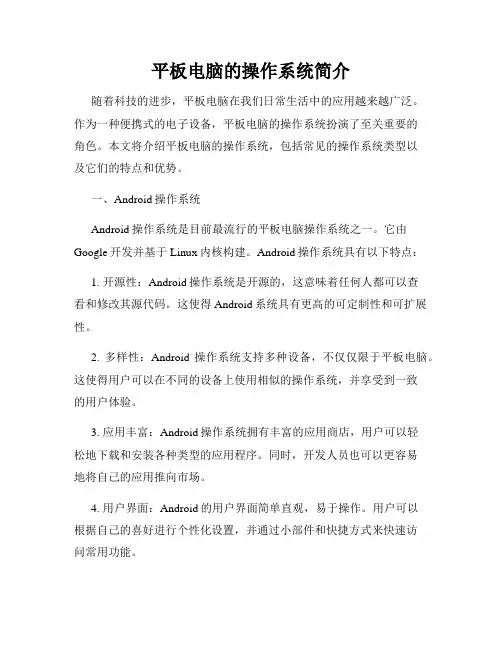
平板电脑的操作系统简介随着科技的进步,平板电脑在我们日常生活中的应用越来越广泛。
作为一种便携式的电子设备,平板电脑的操作系统扮演了至关重要的角色。
本文将介绍平板电脑的操作系统,包括常见的操作系统类型以及它们的特点和优势。
一、Android操作系统Android操作系统是目前最流行的平板电脑操作系统之一。
它由Google开发并基于Linux内核构建。
Android操作系统具有以下特点:1. 开源性:Android操作系统是开源的,这意味着任何人都可以查看和修改其源代码。
这使得Android系统具有更高的可定制性和可扩展性。
2. 多样性:Android操作系统支持多种设备,不仅仅限于平板电脑。
这使得用户可以在不同的设备上使用相似的操作系统,并享受到一致的用户体验。
3. 应用丰富:Android操作系统拥有丰富的应用商店,用户可以轻松地下载和安装各种类型的应用程序。
同时,开发人员也可以更容易地将自己的应用推向市场。
4. 用户界面:Android的用户界面简单直观,易于操作。
用户可以根据自己的喜好进行个性化设置,并通过小部件和快捷方式来快速访问常用功能。
二、iOS操作系统iOS操作系统是由Apple开发的专为其设备定制的操作系统,包括iPad平板电脑。
iOS操作系统具有以下特点:1. 稳定性和安全性:iOS操作系统经过严格的测试和验证,稳定性非常高。
Apple采取了多种安全措施来保护用户的数据和隐私,使得iOS系统拥有较高的安全性。
2. 流畅的用户体验:iOS操作系统的用户界面非常流畅,反应迅速。
Apple注重细节,提供了一致的用户体验,使得用户可以更加方便地使用设备。
3. 生态系统:iOS操作系统与Apple的生态系统紧密结合,用户可以与其他Apple设备无缝衔接。
例如,用户可以通过iCloud同步和备份数据,利用AirDrop无线传输文件等。
4. 应用质量:App Store是iOS系统的应用商店,拥有众多高质量的应用程序。
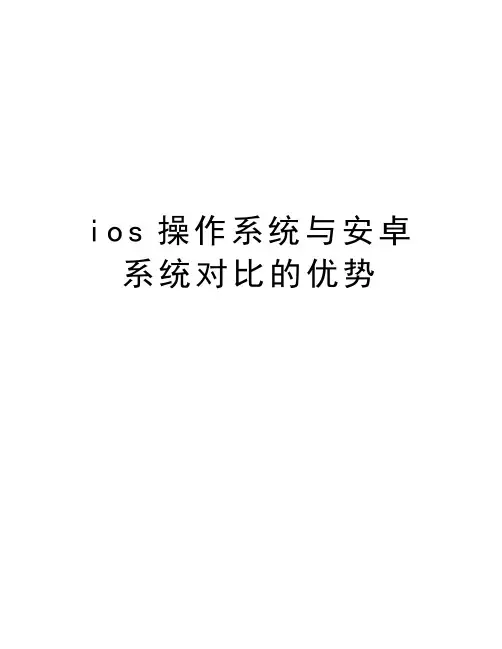
i o s操作系统与安卓系统对比的优势ios操作系统与安卓系统对比的优势Android抗衡iOS还是有些力不从心,比如在移动应用开发者的收入方面,平台的整合度,操作的流畅度等。
尤其在企业级市场,几乎已被iOS全面占领,新兴的企业都表示更加青睐iOS而非所谓“开放”、基于Linux内核、拥有双核甚至四核……的Android设备。
企业级用户对稳定和实时性的需求恰恰就是Android的软肋,网络上一个段子很能表现Android的窘境:“Android用户三大爱好:刷机重启换电池”,还有人出来解释“为什么Android永远不会比iOS流畅”,并称Android是本着学、赶、超的思路诞生并发展起来,在黑莓时代Android设备最早是按照全键盘机型作为参考,后来iPhone的横空出世才导致Android瞬间改头换面,于是为后面的图形渲染等等埋下了隐患。
Android是第一个内置支持Java的操作系统,Android应用程序使用Java语言编写。
Android开发水平的高低很大程度上取决于Java语言核心能力是否扎实。
iOS苹果的iPhone和iPad应用开发都指定使用同一开发语言:Objective-C 语言。
Objective-C是Cocoa的本地编程语言,Coaco框架和大多数应用程序都使用该语言编写而成。
但是也可以使用Python、Ruby等其他编程语言开发应用程序,并且此种开发方式也可使用Cocoa框架。
系统特性:1、与硬件整合度高:使用起来更加流畅;不支持Flash,但可以使用第三方程式Jailbreak观看。
2、通知中心:苹果在iOS5上改变了通知中心的形式。
在新的通知中心中,提示不会再像以前那样弹出,而是像Android系统那样出现在屏幕上方。
你可以下拉这个菜单,选择自己想查看的信息。
不会再被弹出的信息打扰还是件很令人舒服的改变。
3、iMessage:这个iOS5中的新的信息系统将允许iOS5用户之间通过wifi或者3G网络传送短信、彩信、视频以及联系人等数据。

为什么Android是最受欢迎的手机操作系统手机操作系统是指用于智能手机上的软件平台,它决定了手机的功能和用户体验。
而在众多手机操作系统中,Android无疑是最受欢迎的一个。
本文将从开放性、多样性、普及性和生态系统四个方面来解析为什么Android能够成为最受欢迎的手机操作系统。
一、开放性Android操作系统具有极高的开放性,这使得厂商和开发者能够对系统进行自由定制和修改,满足不同用户的需求。
相比之下,其他操作系统如iOS则较为封闭,只能在受限的框架内进行开发和定制。
开放性使得Android能够拥有更多的应用和更广泛的用户群体。
二、多样性Android操作系统的多样性是其魅力之一。
不同厂商可以根据自己的需求和定位进行系统优化和改造,使得每个厂商的Android手机都有独特的特色和功能。
用户可以根据个人喜好和需求选择适合自己的Android手机,不受品牌限制。
而其他操作系统通常只存在于特定品牌的手机上,选择余地较小。
三、普及性Android操作系统的普及性是影响其受欢迎程度的重要原因之一。
由于开放性和多样性的特点,众多厂商都选择了Android作为其手机的操作系统,这使得Android手机在市场上占据了绝大多数份额。
无论是高端还是中低端手机,都可以选择Android操作系统。
这种普及性使得用户更容易接触到并选择使用Android手机。
四、生态系统Android拥有庞大而完善的生态系统,这也是其受欢迎的重要因素之一。
在Android生态系统下,开发者可以轻松开发和发布应用,用户可以方便地下载和安装各种应用。
同时,Google Play商店作为Android 应用分发的主要渠道,拥有海量的应用资源,几乎满足了用户各种需求。
这种丰富的应用生态系统,为用户带来了极大的便利和选择。
总结综上所述,Android之所以成为最受欢迎的手机操作系统,是因为其开放性、多样性、普及性和完善的生态系统。
开放性使得用户可以自由定制和改造系统,多样性使得用户可以选择不同风格和功能的手机,普及性使得用户更容易接触和使用Android手机,而丰富的应用生态系统则为用户提供了便利和选择。
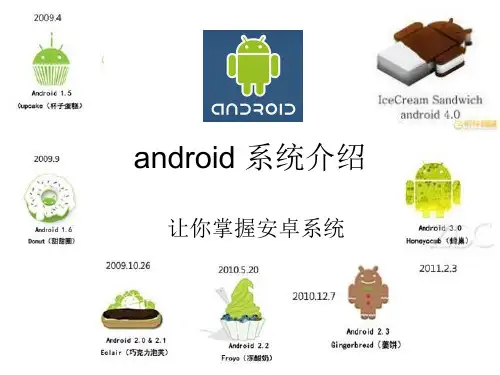
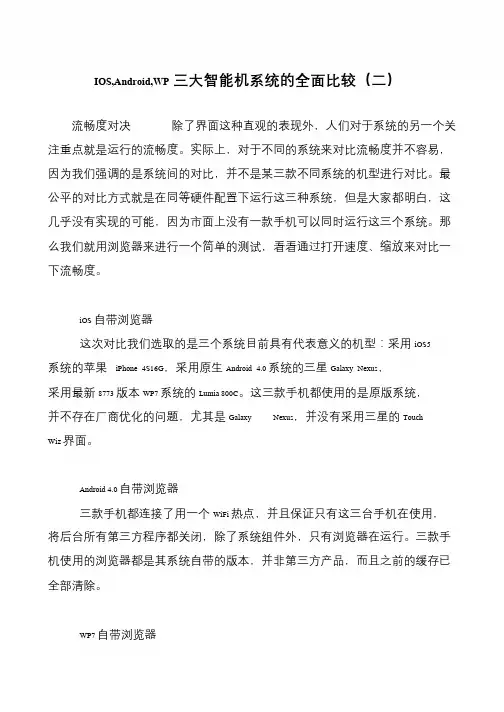
IOS,Android,WP三大智能机系统的全面比较(二)
流畅度对决除了界面这种直观的表现外,人们对于系统的另一个关
注重点就是运行的流畅度。
实际上,对于不同的系统来对比流畅度并不容易,
因为我们强调的是系统间的对比,并不是某三款不同系统的机型进行对比。
最
公平的对比方式就是在同等硬件配置下运行这三种系统,但是大家都明白,这
几乎没有实现的可能,因为市面上没有一款手机可以同时运行这三个系统。
那
么我们就用浏览器来进行一个简单的测试,看看通过打开速度、缩放来对比一
下流畅度。
iOS 自带浏览器
这次对比我们选取的是三个系统目前具有代表意义的机型:采用iOS5
系统的苹果iPhone 4S16G,采用原生Android 4.0 系统的三星Galaxy Nexus,采用最新8773 版本WP7 系统的Lumia 800C。
这三款手机都使用的是原版系统,并不存在厂商优化的问题,尤其是Galaxy Nexus,并没有采用三星的Touch Wiz 界面。
Android 4.0 自带浏览器
三款手机都连接了用一个WiFi 热点,并且保证只有这三台手机在使用,
将后台所有第三方程序都关闭,除了系统组件外,只有浏览器在运行。
三款手
机使用的浏览器都是其系统自带的版本,并非第三方产品,而且之前的缓存已
全部清除。
WP7 自带浏览器。
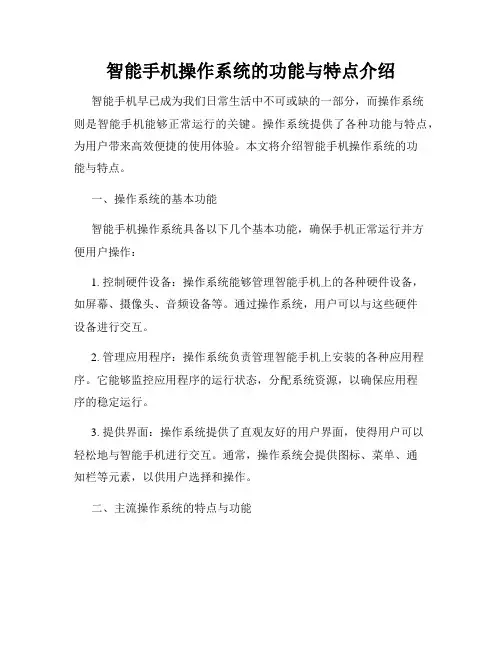
智能手机操作系统的功能与特点介绍智能手机早已成为我们日常生活中不可或缺的一部分,而操作系统则是智能手机能够正常运行的关键。
操作系统提供了各种功能与特点,为用户带来高效便捷的使用体验。
本文将介绍智能手机操作系统的功能与特点。
一、操作系统的基本功能智能手机操作系统具备以下几个基本功能,确保手机正常运行并方便用户操作:1. 控制硬件设备:操作系统能够管理智能手机上的各种硬件设备,如屏幕、摄像头、音频设备等。
通过操作系统,用户可以与这些硬件设备进行交互。
2. 管理应用程序:操作系统负责管理智能手机上安装的各种应用程序。
它能够监控应用程序的运行状态,分配系统资源,以确保应用程序的稳定运行。
3. 提供界面:操作系统提供了直观友好的用户界面,使得用户可以轻松地与智能手机进行交互。
通常,操作系统会提供图标、菜单、通知栏等元素,以供用户选择和操作。
二、主流操作系统的特点与功能目前市场上主要有几种智能手机操作系统,如Android、iOS和Windows Phone。
它们各自具备不同的特点与功能,为用户提供不同的使用体验。
1. AndroidAndroid是由Google开发的开源操作系统,因其开放性和自由度高而受到广泛欢迎。
其特点与功能主要包括:- 强大的定制性:用户可以自由定制手机界面、安装第三方软件,并根据自己的喜好调整系统设置。
- 丰富的应用程序:Android系统用户可以通过Google Play商店下载各种类型的应用程序,满足不同需求。
- 多任务处理:Android系统支持多任务处理,用户可以在同时运行多个应用程序的同时进行切换和操作。
2. iOSiOS是苹果公司开发的操作系统,它的特点与功能主要集中在以下几个方面:- 稳定流畅:iOS系统为苹果手机专门优化,系统稳定性较高,能够确保流畅的使用体验。
- 丰富的生态系统:iOS系统与苹果的硬件设备完美结合,用户可以享受到丰富的高质量应用程序以及与其他苹果设备无缝衔接的功能。
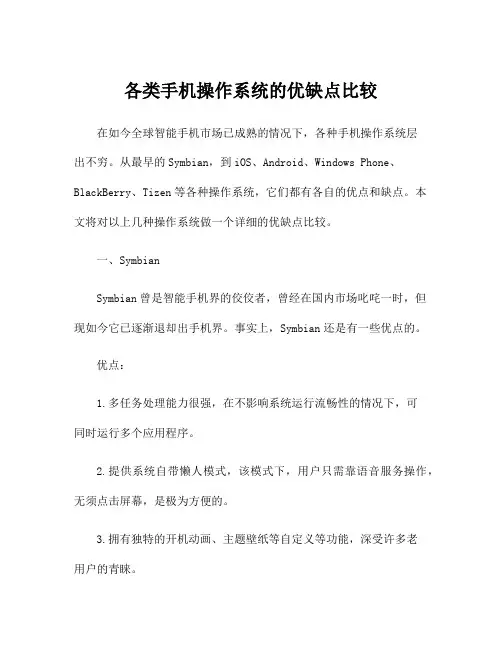
各类手机操作系统的优缺点比较在如今全球智能手机市场已成熟的情况下,各种手机操作系统层出不穷。
从最早的Symbian,到iOS、Android、Windows Phone、BlackBerry、Tizen等各种操作系统,它们都有各自的优点和缺点。
本文将对以上几种操作系统做一个详细的优缺点比较。
一、SymbianSymbian曾是智能手机界的佼佼者,曾经在国内市场叱咤一时,但现如今它已逐渐退却出手机界。
事实上,Symbian还是有一些优点的。
优点:1.多任务处理能力很强,在不影响系统运行流畅性的情况下,可同时运行多个应用程序。
2.提供系统自带懒人模式,该模式下,用户只需靠语音服务操作,无须点击屏幕,是极为方便的。
3.拥有独特的开机动画、主题壁纸等自定义等功能,深受许多老用户的青睐。
缺点:1.操作系统完全使用异步机制,导致使用起来极为复杂,对商业软件开发不友好。
2.界面设计呆板,使用体验较低。
3.网络连接速度慢,缺乏并短缺的Wifi网络接入支持。
二、iOSiOS作为Apple公司推出的系统,在其智能手机iPhone上最先得到了推广发展。
相比其他智能手机操作系统,iOS有许多特殊的优势。
优点:1.界面设计风格先进,美观度和便利性高,易用性极强。
2.支持多点触控操作,操作更为灵活。
3.系统的应用程序数量庞大,一般能满足用户的各种需求。
4.需要访问敏感操作时,系统将提示用户是否允许进行该项操作,这是其他操作系统所不具有的优势。
缺点:1.系统比较封闭,用户无任何折腾的余地,而且所有应用都必须经过App Store首先审核才能上架。
2.缺少文件管理系统,导致文件管理不便。
3.相比Android,iOS定制化程度较低,用户无法按照个人喜好进行自由设置。
三、AndroidAndroid是谷歌推出的一款操作系统,因其开源的特性,受到了开发者的青睐。
优点:1.系统源代码公开,支持开发者客制化,多用于大发棋牌app游戏内嵌。
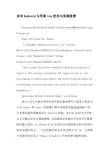
安卓Android与苹果ios优劣与发展前景Andrews Android and Apple IosStrengths&Weaknesses and ProspectsWang Zhifeng1,Xue Yuan2(1.Shanghai Research Center for PolymerMaterials,Shanghai200333,China;2.Hongqiao International Airport and Shanghai Airport GroupCorporation,Shanghai200335,China):This paper describes Google's Andrew system with Apple's IOS system,introduced the application of two systems,detailed evaluation of the differences between the system and the pros and cons,and look at future trends and prospects.Keywords:Andrew Android;Apple ios;System前言:近几年最火的手机和平板电脑是哪个?很多人都会马上说iphone和ipad,问起哪个操作系统普及最迅速和最广的,大家都会想到谷歌的安卓Android系统,这个在2010年在手机以及平板的异常火爆的系统,直接挑战着苹果在手机以及平板系统的霸主地位,自iPhone在07年初次登台将智能手机直接带向移动互联时代后,一方面智能手机普及率直线上升,另一方面整个市场目前呈现了iPhone与Android手机两强争霸的局面。
一、简单介绍下这2个操作系统iOS是由苹果公司为iPhone手机开发的操作系统。
它主要是给iPhone、iPod touch以及iPad使用。
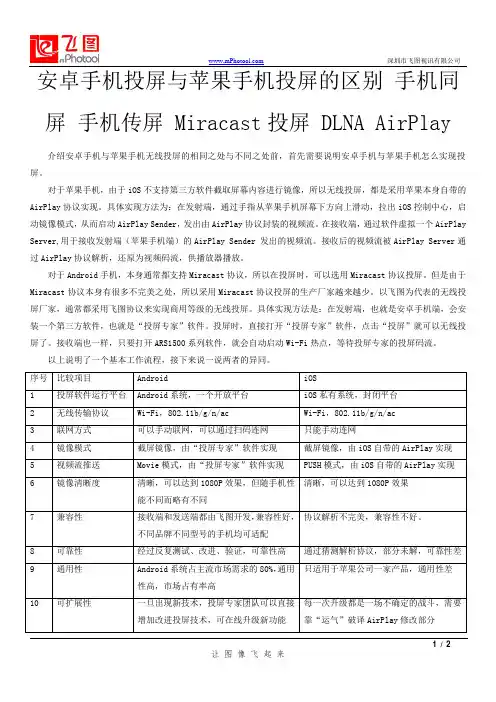
安卓手机投屏与苹果手机投屏的区别手机同屏手机传屏 Miracast投屏 DLNA AirPlay
介绍安卓手机与苹果手机无线投屏的相同之处与不同之处前,首先需要说明安卓手机与苹果手机怎么实现投屏。
对于苹果手机,由于iOS不支持第三方软件截取屏幕内容进行镜像,所以无线投屏,都是采用苹果本身自带的AirPlay协议实现。
具体实现方法为:在发射端,通过手指从苹果手机屏幕下方向上滑动,拉出iOS控制中心,启动镜像模式,从而启动AirPlay Sender,发出由AirPlay协议封装的视频流。
在接收端,通过软件虚拟一个AirPlay Server,用于接收发射端(苹果手机端)的AirPlay Sender 发出的视频流。
接收后的视频流被AirPlay Server通过AirPlay协议解析,还原为视频码流,供播放器播放。
对于Android手机,本身通常都支持Miracast协议,所以在投屏时,可以选用Miracast协议投屏。
但是由于Miracast协议本身有很多不完美之处,所以采用Miracast协议投屏的生产厂家越来越少。
以飞图为代表的无线投屏厂家,通常都采用飞图协议来实现商用等级的无线投屏。
具体实现方法是:在发射端,也就是安卓手机端,会安装一个第三方软件,也就是“投屏专家”软件。
投屏时,直接打开“投屏专家”软件,点击“投屏”就可以无线投屏了。
接收端也一样,只要打开ARS1500系列软件,就会自动启动Wi-Fi热点,等待投屏专家的投屏码流。
以上说明了一个基本工作流程,接下来说一说两者的异同。
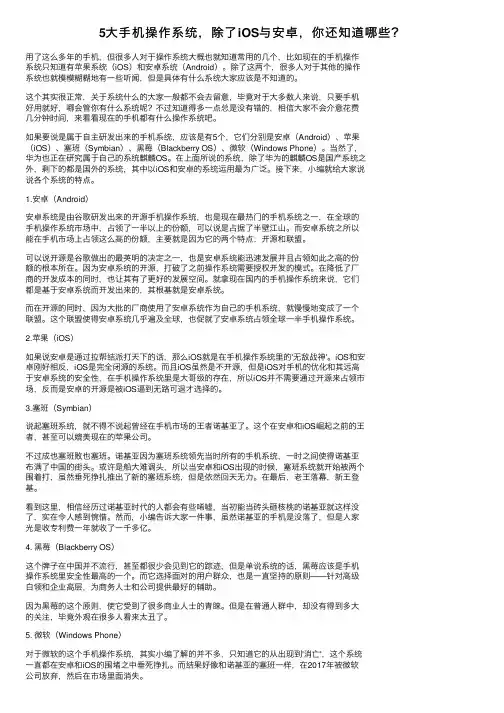
5⼤⼿机操作系统,除了iOS与安卓,你还知道哪些?⽤了这么多年的⼿机,但很多⼈对于操作系统⼤概也就知道常⽤的⼏个,⽐如现在的⼿机操作系统只知道有苹果系统(iOS)和安卓系统(Android)。
除了这两个,很多⼈对于其他的操作系统也就模模糊糊地有⼀些听闻,但是具体有什么系统⼤家应该是不知道的。
这个其实很正常,关于系统什么的⼤家⼀般都不会去留意,毕竟对于⼤多数⼈来说,只要⼿机好⽤就好,哪会管你有什么系统呢?不过知道得多⼀点总是没有错的,相信⼤家不会介意花费⼏分钟时间,来看看现在的⼿机都有什么操作系统吧。
如果要说是属于⾃主研发出来的⼿机系统,应该是有5个,它们分别是安卓(Android)、苹果(iOS)、塞班(Symbian)、⿊莓(Blackberry OS)、微软(Windows Phone)。
当然了,华为也正在研究属于⾃⼰的系统麒麟OS。
在上⾯所说的系统,除了华为的麒麟OS是国产系统之外,剩下的都是国外的系统,其中以iOS和安卓的系统运⽤最为⼴泛。
接下来,⼩编就给⼤家说说各个系统的特点。
1.安卓(Android)安卓系统是由⾕歌研发出来的开源⼿机操作系统,也是现在最热门的⼿机系统之⼀,在全球的⼿机操作系统市场中,占领了⼀半以上的份额,可以说是占据了半壁江⼭。
⽽安卓系统之所以能在⼿机市场上占领这么⾼的份额,主要就是因为它的两个特点:开源和联盟。
可以说开源是⾕歌做出的最英明的决定之⼀,也是安卓系统能迅速发展并且占领如此之⾼的份额的根本所在。
因为安卓系统的开源,打破了之前操作系统需要授权开发的模式。
在降低了⼚商的开发成本的同时,也让其有了更好的发展空间。
就拿现在国内的⼿机操作系统来说,它们都是基于安卓系统⽽开发出来的,其根基就是安卓系统。
⽽在开源的同时,因为⼤批的⼚商使⽤了安卓系统作为⾃⼰的⼿机系统,就慢慢地变成了⼀个联盟。
这个联盟使得安卓系统⼏乎遍及全球,也促就了安卓系统占领全球⼀半⼿机操作系统。
2.苹果(iOS)如果说安卓是通过拉帮结派打天下的话,那么iOS就是在⼿机操作系统⾥的'⽆敌战神'。
ESEP 2011: 9-10 December 2011, SingaporeAn Analysis and Comparison of Open and Closed MobilePlatformsAndroid vs. iPhoneYinglu ZOUa, , Hao WU b, Jianxin HUANG a,ba Information Engineering College,7 JianXue Road, JinShui District, ZhengZhou,450001, ChinaAbstractWith the release of Android 2.2 Froyo and iPhone 4, the war between open and closed mobile platforms tends to befiercer. Being the representatives of the two parties, Froyo and iOS 4 are quite different at system framework, newfeature, application market and integration model. According to the company spirits of Google and Apple, we do some analyses and comparisons of the above points, explain the differences of Android and iPhone from the shallower to the deeper, then conclude the characteristics of open and closed mobile platforms, aiming at providing an objective reference for researchers of mobile platforms, helping them see clearer into mobile industry. As a result,both Froyo and iOS 4 have their advantages and disadvantages, still they are far from being perfect, there‟s room forfurther improvement.Keywords: Android;iPhone;Froyo;iOS 4;smart phone;mobile platform1. IntroductionIn recent years, the popularity of smart phone kept going up. More and more smart phones are sold anda lot of people are embracing them. Smart phones brought great convenience to users, as well created opportunities for smart phone researchers. That‟s to say, the wide spread of smart phones benefited both sides. At the same time, developing of smart phone OS becomes one of the smartest industry. To be a smart phone OS, the system should: 1. Provide services like a PC. 2. Work with a GPU for better visual effects. 3. Allow the user to surf on Internet freely. And apparently, there‟re also some weaknesses:1.Limited batte ry. 2. Poor CPU performance against PC CPU. 3. Small storage. 4. The use of RAM may leads to loss of data when the phone runs out of batteryNow the 2 giants of smart phone OS are Android and iPhone OS. On one side, Android is based on Linux kernel and Dalvik virtual machine, and it is open sourced. The upper layer of Android is Java based,allowing developers to develop Android applications with Google SDK and sell their software in Android Market. On theother side, iPhone OS, which bases on Unix kernel and Darwin model but is closed sourced,evolves from Mac OS X and is the default OS of iPhone, iPod Touch and iPad. Objective C based software can run in iPhone OS, and just like Android, you can develop your own iPhone applications and upload them onto Apple‟s …App Store‟ for sale [1] [2] [3] [4].By comparing the latest Android and iPhone OS, Android 2.2 Froyo and iOS 4, we can take a glimpse at the main feature of open and closed smart phone OSs. While the 2 OSs are designed in rather different mentality an d functionality, it‟s a little early to tell which one is better.2. Smart Phone OS2.1. AndroidThe system architecture of Android consists of 5 layers, which are Linux Kernel, Android Runtime, Libraries, Application Framework and Applications, from bottom to top.Android provides core services like security, memory management, process management, network stack and drivers, basing on Linux 2.6. Being the abstract layer between software and hardware, the layer of Linux Kernel hides the implementing details of hardware and provides integrated services for upper layer.Dalvik virtual machine and Java core libraries are included in the layer of Android Runtime, providing most functions in Java core libraries.The layer of Libraries contains a class of C/C++ libraries for Android components. Those libraries are integrated by the layer of Application Framework and then provided to developers.The layer of Application Framework provides all kinds of modules for program initialization to simplify the use of components, allowing developers do whatever they want and provide services for other softwares, under the limitation of security, of course.Mainstream applications are located in the layer of Application, including e-mail, SMS, calendar, Google map, Web browser and contacts. Users interact directly with this layer [1] [2].The latest version of Android, Android 2.2 Froyo, puts on some new features. They are: 1. Support Flash 10.1, enables user to watch flash on the phone. 2. V8 JavaScript engine in web browser leads to faster Internet data transportation. 3. Big advance in network sharing. You can use the phone as a 3G NIC,or convert 3G signalto Wi-Fi. 4. Automatically software update. 5. Softwares can be setup in SD card to extend file storages.2.2. iPhoneiPhone OS is consist of 4 abstract layers: Core OS, Core Service, Media and Cocoa Touch respectively.Layers of Core OS and Core Service are designed in C language to handle core system services, enabling developers to perform file access, sockets calling and data handling. CFNetwork and SQLite are also parts of these 2 layers.The layer of Media, according to its name, this layer is used to control video and audio, as well handle 2D and 3D images. The Open GL-ES Quratz part of the layer is coded with C language, while the part of Core-Audio and Core-Animation is Objective C based.The layer of Cocoa Touch builds a basic framework for all kinds of programs in iPhone. Most programs run in Cocoa Touch layer, and it‟s surely Objective C based [3] [4].The latest iPhone OS is iOS 4. It includes the following new features: 1.Software classification. Thisfeature enables user to place sorted softwares into different documents, making it clearer to manage. 2. Email integration. One account is for all e-mails from different providers. 3. iBook, originally from iPad, is built in iOS. 4. A brand new Apple Game Center makes iPhone a tremendous entertainment platform.2.3. Android vs. iPhoneBeing the top 2 smart phone OSs, we‟re sure that both Android and iPhone have their own advantages and disadvantages. Now let‟s take a look at each of them, and see what unique feature they have.Android 2.2 Froyo fully support multitask, which means you can listen to music while writing blog. And iOS 4, officially announced to be …multitasked‟, is in fact a play of concept. Only a few of softwares which are authorized by Apple can run …simultaneously‟, whose principle is much easier that multitask:when an application is switched out, its current state is saved and then the system just closes it. And when it‟s switched in, we‟re back to the previous snapshot [5] [6] [7].During the publication of Android 2.2 Froyo, Google announced it has …the most fluent web browser‟,because the use of V8 JavaScript engine. V8 is a brand new engine, designed for running big size JavaScript application. In some kind of tests, V8is much faster than JScript from Internet Explorer, SpiderMonkey from Firefox and JavaScriptCore from Safari. It all owe to 3 key parts of V8, they‟re fast attribute access, dynamic code generation, effective trash cleaning.2.3.1. Fast Attribute AccessJavaScript is a kind of dynamic language, which means attributes can be added or deleted at runtime, and they‟re frequently changed. Most JavaScript engines use a dictionary style structure to store the attributes of an object, so it requires a whole dictionary search to find the position of attributes in memory.It‟s quite inefficient and it‟s slower than Java and Smalltalk.To solve this problem, V8 discarded dynamic search and realized it in a different way: Create hidden classes for objects dynamically. In JavaScript, every time when we‟re adding a new attribute to an object,we create a subclass with the new attribute from a hidden class as the super class. It‟s a recursive course and the above performance happens only once when we first do this. Later we just use the previous hidden subclass when we‟re in the same situation. So there‟s no need to repeat operation and create a dictionary. This leads to the save of time and energy, as well make it easier for the implementation of class optimization and inner cache [4].2.3.2. Dynamic Code GenerationWhen JavaScript is running for the very first time, V8 translate it directly into local machine code, rather than explain it to bytecode. Attribute access is done by inner cache, which is often translated into instructions by V8 at runtime.When it comes to the code where certain object is accessed, V8 tries to find the current hidden class. Meanwhile, V8 assumes that all objects in the snippet are described by the same hidden class, so V8 willmodify corresponding inner cache to make the direct use of the hidden class more convenient. If thisassumption is correct, the access of attributes can be all done in only 1 instruction. Even if the predictionfails, inner cache is modified again by V8, which won‟t take too much time and resource. When one hidden class is shared by a lot of objects, the access speed can be close to most dynamic language access speed. Inner cache and hidden class, mixed with dynamic code and class optimization, improve the efficiency of JavaScript at a large scale [4].2.3.3. Effective Trash CleaningV8 does memory recycles automatically. To guarantee the speed of object distribution, as well cut the time of trash cleaning and clear fragment up, V8 willinterrupt the running application when performing trash cleaning. Mostly, only a small part of object stack is involved in trash cleaning cycle, so the interruption caused little. All location of objects and pointers are logged by V8, so the system won‟t take object for pointer and memory overflow is avoided [4].Besides …the most fluent web browser‟, Google collaborated with Adobe and Android 2.2 Froyo fully supports Flash. That‟s to say, not only flash media, but all flash web pages can display perfectly on Android. To the contrary, Apple turned down Adobe and take HTML5 as iPhone‟s web protocol, making it unable to show some flash based animation.Android 2.2 Froyo also leads the way in network sharing. Smart phone with Froyo can be connected toa PC as a 3G NIC, and can also conveniently convert 3G signal to Wi-Fi. iOS 4 can do the first too, butfailed to convert 3G to Wi-Fi.Video conference is both supported by Froyo and iOS 4, but the conditions are different. You can see aFroyo user via camera as long as you get a camera also. However, iOS 4 user can only do video talk toanother iOS 4 user, which is a big limitation.While Android is ascendant in network interaction, Apple is unique in its friendship and entertainment.The added feature of …software classification‟ enables user to place sorted softwares into differentdocuments, making it clearer to manage. What‟s more, there‟re hundreds of thousands applications inApp Store, meaning that iPhone can have up to hundreds of thousands functions. This is a ratherremarkable feature that Apple publicizes.And the most convincing point given by Apple, is that …Android looks exactly familiar with iPhone.‟Although it‟s just a subjective sense, the born of iPhone really brought big revolution to the phone industry, and the name …Apple‟ itself is a world famous brand [7] [8].3. Open and Closed platforms3.1. SDKThe most important part of every developing platform is SDK, enable 3rd party developers to make software for the platform. Usually, libraries, debug tools and emulators are included in SDK. Different platforms distribute their SDKs differently. Some SDK is complete free and open, while others are strictly limited.Developers of open platforms can get and modify part or all of the source code. Google and Linux are leaders of open platforms; they publicized the whole sourcecode of Android and Linux. The good point is that, platform owners can save a great amount of time and energy developing and maintaining the platform, because 3rd party developers will do this for them. With less money spent on development and maintenance, a relatively low price can attract more and more phone users.Contrarily, closed platforms lock their source code in the safety and forbid 3rd party accesses. Apple and Microsoft are the representatives of them, they are both closed sourced, but some differences do exists. 3rd party iPhone applications are restricted within narrow limits, for that Apple will look through every application which is uploaded onto …App Store‟, and a lot of applications are turned down.Microsoft don‟t check Windows applications at all, it all depends on the users themselves. You installed the mareware, you suffer the loss.3.2. Application MarketMarket is the medium between de velopers and users, hence it‟s very important. Some predicted that there will be more and more application markets while some don‟t think so. In current markets, both do exist. Some specify only one market for their products, while others sell their softwares in various markets.Softwares from Nokia, Microsoft and Linux Mobile are sold in every market. Developers of these platforms can release their own application in whatever markets, so markets have to compete with each other for a living. This is good for users. However, the lack of universal management may lead to mess and chaos, softwares that have the same functionality exist in different markets, which confuses users a lot.Correspondingly, sole markets claim that most applications should be sold in them. This kind of monopolization leads to no competitor. …App Store‟ and ‟Android Market‟ are deputy of sole markets. Normally, iPhone applications can only be found in …App Store‟, and Apple will check every one of them by itself. Good news is that every application in …App Store‟ is officially tested, it‟s safe; Bad news is that a lot of pretty good softwares are rejected for various reasons. And a big unofficial mechanism is built by hackers, that is …jailbreak‟ and …SIM unlock‟.…Jailbreak‟ is a process that allows iPad, iPhone and iPod Touch users to gain root access and unlock the operating system thus removing any limitations imposed upon them by Apple. Once jailbroken, iPhone users are able to download many extensions and themes previously unavailable through the App Store via installers such as Cydia. A jailbroken iPad, iPhone or iPod Touch is still able to use the App Store and iTunes [9].And a …SIM lock‟ is a capability built into GSM phones by mobile phonemanufacturers. Networkproviders use this capability to restrict the use of these phones to specific countries and network providers.Generally, phones can be locked to accept only SIM cards based on the International Mobile Subscriber Identity. …SIM unlock‟ make it possible to use a mobile phone without considering countries and networks specified by mobile phone manufacturers.However in Android, Google doesn‟t test every application at all, so although there‟s an official market for Android applications, you can still release your product anywhere you want. Considering security problems, Google banned the use of some components. Like …jailbreak‟ and …SIM unlock‟ in iPhone, …root‟ in Android gives users 100% control of their devices, along with some security risks. …Root‟ is a process that allows users of cellphones running the Android operating system to attain privileged control (known as "root access") within Android's Linux subsystem, similar to jailbreaking on Apple devices running the iOS operating system, overcoming limitations that the carriers and manufacturers put on such phones. Rooting makes it possible to use custom versions of the Android system such as CyanogenMod, supporting features unavailable in stock ROMs. It also allows for newer versions of Android not supplied by the original device manufacturer. In contrast to iOS jailbreaking, rooting is not needed to run applications not distributed by the official Android Market. It is needed however, when trying to access paid Android applications from countries which are not part of the paid applications market.3.3. IntegrationSome companies focus only on their core industry, i.e. develop an operating system and provide an environment for 3rd party development. Others not only do these, but manage the process of developing a software to publicizing it. Depending on the integration of platforms, we sort them to 4 kinds: full integration platform, market integration platform, device integration platform and no integration platform.The publicizing model of full integration platform is very strict. Its management ranges from device manufacturing to application release, whose representative is Apple. Apple‟s factory produces iPhone,Apple‟s …App Store‟ sells application, Apple‟s …iTunes‟ is the channel of Apple‟s resources. The whole process is under Apple‟s control.Market integration platforms commit themselves to developing and selling softwares. Google is one of them. Unlike apple, Google don‟t have a factory tomanufacture its own handsets, but only developed Android and set up …Android M arket‟ for Android applications. However, companies like Google definitely have the capability to produce its own devices. Google is in good relationship with HTC, who is the OEM of T-Mobile, O2 and Orange, etc.Device integration platforms produce their o wn handsets, but don‟t set up application markets. Forexample, RIM makes Blackberry, but there‟s no official application market for Blackberry. No integration platforms do few things. Microsoft neither makes mobile phones, nor sets up a market.What they do is only developing the operating system: Windows Phone 7.4. ConclusionRepresentatives of open and closed platforms, Android 2.2 Froyo and iOS 4 are both loved and hated.Great browsers are built into them, and their producers are both world famous revolutionary. Android leans to Internet experience, which comes down in one continuous line with Google. But currently, various versions of Android fill the market, and most companies in Open Handset Alliance tend to customize their own Android systems. These facts make Android lack of a general brand image, so people may feel confused and say …No‟ to Android. iPhone OS focuses more on entertainment and it‟s very friendly. But Apple is too cool to attract more customers: Diehard fans of Steve Jobs buy every product made by Apple, and people who dislike the style Apple do things may just sniffed at Apple.Besides, Android 2.2 Froyo succeeds the features of open platforms well. It‟s a …users only‟ platform, because users of Froyo can almost customize everything they want. And members of Open HandsetAlliance tend to provide more choices for users. And iOS 4, typically closed platform member, manages everything ranging from OS development to device manufacturing. It‟s a …consider for users‟ platform.To some extent, u sers of Android canonizes …free‟ and …open‟, what they care is if they have 100% management of their handsets, no matter whether the OS is called …Android‟ or …Another‟. Apple users are loyal to the brand; they would like to authorize Apple to make decisions for them. So although some iPhone users love physical keyboards, they bought iPhone. In other words, Android users think a lot of …open platform‟ rather than the brand Google; most iPhone users are follower of Apple, they love the …closed platforms‟ cre ated by Steve Jobs.Both Android and iPhone have their unique IDE, SDK and other characteristics. Believe it or not, no perfection exists in the world, so none of today‟s mobileplatforms fully meets the needs of users and researchers. The choice of platform boils down to the needs of users and researchers, this article should make the decision easier. Of course the content of this article is time sensitive; platforms will gradually meet the demands of consumers as new technologies emerging.References[1] Dave Mark, Jeff LaMarche. “Beginning iPhone 3 Development: Exploring the iPhone SDK”. 2009.[2] Erica Sadun. “The iPhone Developer‟s Cookbook: Building Application with the iPhone SDK”, 2009.[3] Ed Burnette. “Hello, Android: Introducing Google‟s Mobile De velopment Platform”, 2009.[4] W.Frank Ableson, Charlie Collins, Robi Sen. “Unlocking Android: A Developer‟s Guide”, 2010.[5] Hee- Yeon Cho, Choon- Sung Nam, Dong- Ryeol Shin. “A Comparison of Open and Closed Mobile Platforms”.International Conference on Electronics and Information Engineering, 2010.[6] Ryan C. McKeen, Finis R. Price III. “DROID v iPHONE”. ABA Journal, 2010.[7] Mies Ginny, Sullivan Mark. “iPhone 4 vs. Droid X: A Head-to-Head Comparison”. PC World, 2010.[8] Fleishman, Glenn. “More Options With Tomorrow's Cell Phones”. PC World, 2008.[9] Keller, Mike. “Jailbreaking Your iPhone: The Pros and Cons”. PC World, 2010.分析和比较开放和封闭的移动平台摘要随着Android 2.2 Froyo和iPhone 4版本的发布,开放式和封闭式的移动平台之间的战争愈演愈烈。
安卓系统与IOS系统比较―英文文献翻译(适用于毕业论文外文翻译+ESEP 2021: 9-10 December 2021, SingaporeAn Analysis and Comparison of Open and Closed MobilePlatforms AbstractWith the release of Android 2.2 Froyo and iPhone 4, the war between open and closed mobile platforms tends to befiercer. Being the representatives of the two parties, Froyo and iOS 4 are quite different at system framework, newfeature, application market and integration model. According to the company spirits of Google and Apple, we do some analyses and comparisons of the above points, explain the differences of Android and iPhone from the shallower to the deeper, then conclude the characteristics of open and closed mobile platforms, aiming at providing an objective reference for researchers of mobile platforms, helping them see clearer into mobile industry. As aresult,both Froyo and iOS 4 have their advantages and disadvantages, still they are far from being perfect, there?s room forfurther improvement.Keywords: Android;iPhone;Froyo;iOS 4;smart phone;mobile platform1. IntroductionIn recent years, the popularity of smart phone kept going up. More and more smart phones are sold anda lot of people are embracing them. Smart phones brought great convenience to users, as well created opportunities for smart phone researchers. That?s to say, the wide spread of smart phones benefited both sides. At the same time, developing of smart phone OS becomes one of the smartest industry. To be a smart phone OS, the system should: 1. Provide services like a PC. 2. Work with a GPU for better visual effects. 3. Allow the user to surf on Internet freely. And apparently, there?re also some weaknesses:1.Limited battery. 2. Poor CPU performance against PC CPU. 3. Small storage. 4. The use of RAM may leads to loss of data when the phone runs out of batteryNow the 2 giants of smart phone OS are Android and iPhone OS. On one side, Android is based on Linux kernel and Dalvik virtual machine, and it is open sourced. The upper layer of Android is Java based,allowing developers to develop Android applications with Google SDK and sell their software in Android Market. On the other side, iPhone OS, which bases on Unix kernel andDarwin model but is closed sourced,evolves from Mac OS X and is the default OS of iPhone, iPod Touch and iPad. Objective C based software can run in iPhone OS, and just like Android, you1can develop your own iPhone applications and upload them onto Apple?s ?App Store? for sale [1] [2] [3] [4].By comparing the latest Android and iPhone OS, Android 2.2 Froyo and iOS 4, we can take a glimpse at the main feature of open and closed smart phone OSs. While the 2 OSs are designed in rather different mentality and functionality, it?s a little early to tell which one is better.2. Smart Phone OS2.1. AndroidThe system architecture of Android consists of 5 layers, which are Linux Kernel, Android Runtime, Libraries, Application Framework and Applications, from bottom to top.Android provides core services like security, memory management, process management, network stack and drivers, basing on Linux 2.6. Being the abstract layer between software and hardware, the layer of Linux Kernel hides the implementing details of hardware and provides integrated services for upper layer.Dalvik virtual machine and Java core libraries are included in the layerof Android Runtime, providing most functions in Java core libraries.The layer of Libraries contains a class of C/C++ libraries for Android components. Those libraries are integrated by the layer of Application Framework and then provided to developers.The layer of Application Framework provides all kinds of modules for program initialization to simplify the use of components, allowing developers do whatever they want and provide services for other softwares, under the limitation of security, of course.Mainstream applications are located in the layer of Application, including e-mail, SMS, calendar, Google map, Web browser and contacts. Users interact directly with this layer [1] [2].The latest version of Android, Android 2.2 Froyo, puts on some new features. They are: 1. Support Flash 10.1, enables user to watch flash on the phone. 2. V8 JavaScript engine in web browser leads to faster Internet data transportation. 3. Big advance in network sharing. You can use the phone as a 3G NIC,or convert 3G signal to Wi-Fi. 4. Automatically software update. 5. Softwares can be setup in SD card to extend file storages.2.2. iPhone2iPhone OS is consist of 4 abstract layers: Core OS, Core Service, Media and Cocoa Touch respectively.Layers of Core OS and Core Service are designed in C language to handle core system services, enabling developers to perform file access, sockets calling and data handling. CFNetwork and SQLite are also parts of these 2 layers.The layer of Media, according to its name, this layer is used to control video and audio, as well handle 2D and 3D images. The Open GL-ES Quratz part of the layer is coded with C language, while the part of Core-Audio and Core-Animation is Objective C based.The layer of Cocoa Touch builds a basic framework for all kinds of programs in iPhone. Most programs run in Cocoa Touch layer, and it?s surely Objective C based [3] [4].The latest iPhone OS is iOS 4. It includes the following new features: 1.Software classification. Thisfeature enables user to place sorted softwares into different documents, making it clearer to manage. 2. Email integration. One account is for all e-mails from different providers. 3. iBook, originally from iPad, is built in iOS. 4. A brand new Apple Game Center makes iPhone a tremendous entertainment platform.2.3. Android vs. iPhoneBeing the top 2 smart phone OSs, we?re sure that both Android and iPhone have their own advantages and disadvantages. Now let?s take a look at each of them, and see what unique feature they have.Android 2.2 Froyo fully support multitask, which means you can listen to music while writing blog. And iOS 4, officially announced to be ?multitasked?, is in fact a play of concept. Only a few of softwares which are authorized by Apple can run ?simultaneously?, whose principle is much easier thatmultitask:when an application is switched out, its current state is saved and then the system just closes it. And when it?s switched in, we?re back to the previous snapshot [5] [6] [7].During the publication of Android 2.2 Froyo, Google announced it has ?the most fluent web browser?,because the use of V8 JavaScript engine. V8 is abrand new engine, designed for running big size JavaScript application. In some kind of tests, V8 is much faster than JScript from Internet Explorer, SpiderMonkey from Firefox and JavaScriptCore from Safari. It all owe to 3 key parts of V8, they?re fast attribute access, dynamic code generation, effective trash cleaning.32.3.1. Fast Attribute AccessJavaScript is a kind of dynamic language, which means attributes can be added or deleted at runtime, and they?re frequently changed. Most JavaScript engines use a dictionary style structure to store the attributes of an object, so it requires a whole dictionary search to find the position of attributes in memory.It?s quite inefficient and it?s slower than Java and Smalltalk.To solve this problem, V8 discarded dynamic search and realized it in a different way: Create hidden classes for objects dynamically. In JavaScript, every time when we?re adding a new attribute to an object,we create a subclass with the new attribute from a hidden class as the super class. It?s arecursive course and the above performance happens only once when we first do this. Later we just use the previous hidden subclass when we?re in the same situation. So there?s no need to repeat operation and create a dictionary.This leads to the save of time and energy, as well make it easier for the implementation of class optimization and inner cache [4].2.3.2. Dynamic Code GenerationWhen JavaScript is running for the very first time, V8 translate itdirectly into local machine code, rather than explain it to bytecode.Attribute access is done by inner cache, which is often translated into instructions by V8 at runtime.When it comes to the code where certain object is accessed, V8 tries to find the current hidden class. Meanwhile, V8 assumes that all objects in the snippet are described by the same hidden class, so V8 willmodify corresponding inner cache to make the direct use of the hidden class more convenient. If thisassumption is correct, the access of attributes can be all done in only 1 instruction. Even if the predictionfails, inner cache is modified again by V8, which won?t take too much time and resource. When one hidden class is shared by a lot of objects, the access speed can be close to most dynamic language access speed. Inner cache and hidden class, mixed with dynamic code and class optimization, improve the efficiency of JavaScript at a large scale [4].2.3.3. Effective Trash CleaningV8 does memory recycles automatically. To guarantee the speed of object distribution, as well cut the time of trash cleaning and clear fragment up, V8 will interrupt the running application when performing trash cleaning. Mostly, only a small part of object stack is involved in trash cleaning cycle, so the interruption caused little. All location of objects and pointers are logged by V8, so the system4won?t take object for pointer and memory overflow is avoided [4].Besides ?the most fluent web browser?, Google collaborated with Adobe and Android 2.2 Froyo fully supports Flash. That?s to say, not only flash media, but all flash web pages can display perfectly on Android. To the contrary, Apple turned down Adobe and take HTML5 as iPhone?s web protocol, making it unable to show some flash based animation.Android 2.2 Froyo also leads the way in network sharing. Smart phone with Froyo can be connected toa PC as a 3G NIC, and can also conveniently convert3G signal to Wi-Fi. iOS 4 can do the first too, butfailed to convert 3G to Wi-Fi.Video conference is both supported by Froyo and iOS 4, but the conditions are different. You can see aFroyo user via camera as long as you get a camera also. However, iOS 4 user can only do video talk toanother iOS 4 user, whichis a big limitation.While Android is ascendant in network interaction, Apple is unique in its friendship and entertainment.The added feature of ?software classification?enables user to place sorted softwares into differentdocuments, making it clearer to manage. What?s more, there?re hundreds of thousands applications inApp Store, meaning that iPhone can have up to hundreds of thousands functions. This is a ratherremarkable feature that Apple publicizes.And the most convincing point given by Apple, is that ?Android looks exactly familiar with iPhone.? Although it?s just a subjective sense, the born of iPhone really brought big revolution to the phone industry, and the name ?Apple? itself is a world famous brand [7] [8].3. Open and Closed platforms3.1. SDKThe most important part of every developing platform is SDK, enable 3rd party developers to make software for the platform. Usually, libraries, debug tools and emulators are included in SDK. Different platforms distribute their SDKs differently. Some SDK is complete free and open, while others arestrictly limited.Developers of open platforms can get and modify part or all of the source code. Google and Linux are leaders of open platforms; they publicized the whole source code of Android and Linux. The good point is that, platform owners can save a great amount of time and energy developing and maintaining the platform, because 3rd party developers will do this for them. With less money spent on development and5感谢您的阅读,祝您生活愉快。
ios操作系统与安卓系统对比的优势操作系统与安卓系统对比的优势Android抗衡iOS还是有些力不从心,比如在移动应用开发者的收入方面,平台的整合度,操作的流畅度等。
尤其在企业级市场,几乎已被iOS全面占领,新兴的企业都表示更加设备。
青睐iOS而非所谓“开放”、基于Linux内核、拥有双核甚至四核……的Android设备。
企业级用户对稳定和实时性的需求恰恰就是Android的软肋,网络上一个段子很能表现Android的窘境:“Android用户三大爱好:刷机重启换电池”,还有人出来解释“为什么Android 永远不会比iOS流畅”,并称Android是本着学、赶、超的思路诞生并发展起来,在黑莓时代Android设备最早是按照全键盘机型作为参考,后来iPhone的横空出世才导致Android瞬间改头换面,于是为后面的图形渲染等等埋下了隐患。
间改头换面,于是为后面的图形渲染等等埋下了隐患。
Android是第一个内置支持Java的操作系统,Android应用程序使用Java语言编写。
Android开发水平的高低很大程度上取决于Java语言核心能力是否扎实。
iOS苹果的iPhone 和iPad应用开发都指定使用同一开发语言:Objec ve-C语言。
Objec ve-C是Cocoa的本地编程语言,Coaco框架和大多数应用程序都使用该语言编写而成。
但是也可以使用Python、Ruby等其他编程语言开发应用程序,并且此种开发方式也可使用Cocoa框架。
框架。
系统特性:1、与硬件整合度高:使用起来更加流畅;不支持Flash,但可以使用第三方程式Jailbreak观看。
2、通知中心:苹果在iOS5上改变了通知中心的形式。
在新的通知中心中,提示不会再像以前那样弹出,而是像Android系统那样出现在屏幕上方。
你可以下拉这个菜单,选择自己想查看的信息。
不会再被弹出的信息打扰还是件很令人舒服的改变。
3、iMessage:这个iOS5中的新的信息系统将允许iOS5用户之间通过wifi或者3G网络传送短信、彩信、视频以及联系人等数据。